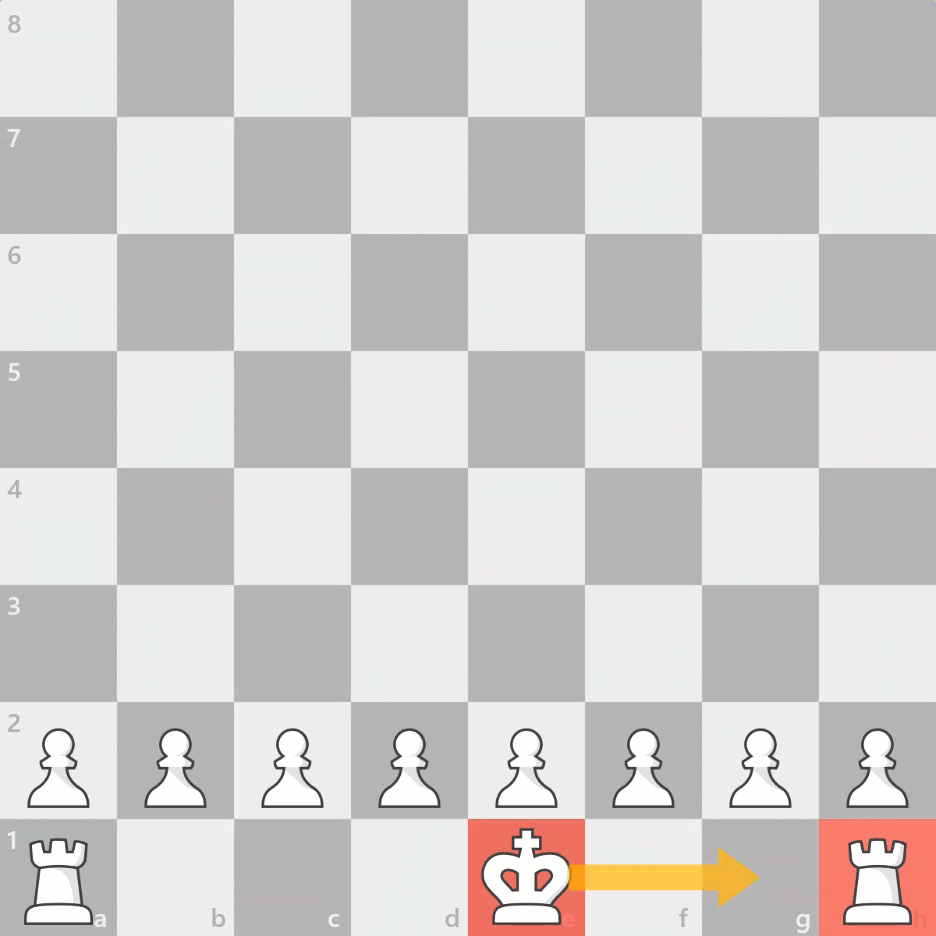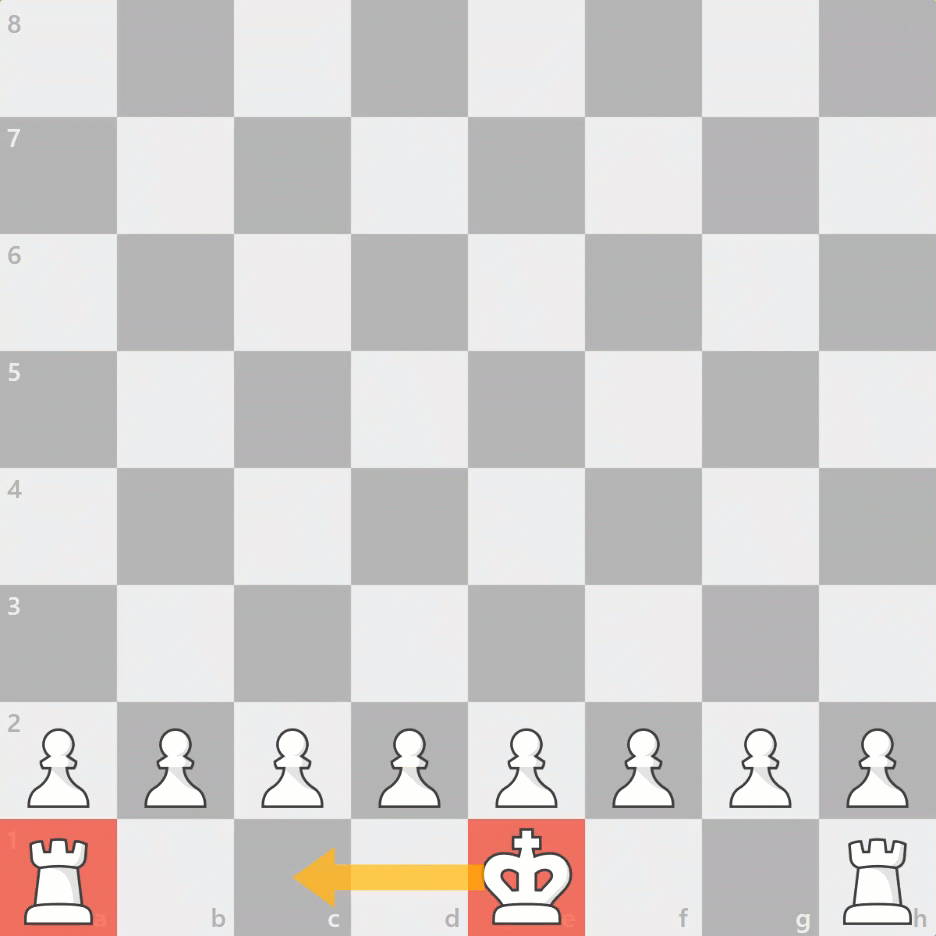
- Basics, Learning, Rules
- March 22, 2022
- 8:25 am
What are the rules for castling in chess?
Castling is a special rule in chess with very specific parameters that allow a player to castle. It’s also important as a chess player to learn the best time to castle to ensure an optimal positional advantage in your games.
In this article, we will be describing all of the necessary preconditions for castling, the different castling directions, and teach you the best time to castle!
This is a crucial thing to learn, but we promise, it’s not hard.
King-side castling – where the White king goes two spaces to his right, and on the other side of the board the Black king can go two spaces to his left. See this diagram with the kings moving along the red line and the rooks along the green line:

Queen-side castling – similar in that the king moves two spaces but this time the White king goes left and the Black king goes right. See here:

Queen-side castling
In both cases, the rook is placed on the opposite side of the king after the move is completed. In chess rules, it is critical to remember that you MUST touch and move the king first in the sequence, or the move is just a rook move.
In short, castling is when the king moves 2 spaces left or right, and the rook is placed opposite and adjacent to the king.
The main purpose of a castling move is to escape your king to safety, sat nicely behind a wall of pawns in the corner of the board, and protected by centralized pieces.
Games are won and lost by players deciding if and when a player to castle. In many cases, beginners will lose chess games because they failed to castle in a timely manner and this resulted in their king being exposed to the center.
However, the timing of your castling is crucial, and it is possible to make your position worse by castling.
So while we often teach beginners to castle as soon as possible, a professional chess player may wait quite a bit longer into a game before making this decision for their position.
Castling does two things:
- it protects your king to the corner of the board, surrounded by pawns and a strong guardian (rook)
- it moves your rook closer to the center of the board (development) giving you stronger centralized pieces
Given this, castling is potentially one of the most important moves in the game, in spite of it being common and mundane.
If you recall, we explained that castling is moving the king 2 spaces left or right, and the rook opposite the king. However, there are certain preconditions that must be met for castling to be a legal move in a chess game.
Castling can only happen if all of the following conditions are met in a game:
- The king has not moved throughout the game
- The rook has not moved throughout the game
- All spaces between the rook and king must be empty squares (no pieces blocking the way)
- The king cannot be in check
- None of the squares that the king will travel over (including the final landing square) can be checked / attacked by an opponent’s piece
The idea of castling should be on your agenda from the very start of the game. Don’t simply wait for the preconditions to be met. Instead, think about your opening, your position, your opponents moves, and consider when you will (or won’t) execute a castling move for your position.
You should consider the following when deciding on when you plan to castle.
- Occupy the center
- Develop your pieces
- Get your king to safety
So you can see that understanding castling and when to effect it should be a fundamental part of your training.
So now that we know how to castle, it’s important to consider more in-depth when to castle. While we’ve covered it briefly, it’s important to remember that it is possible to
One example of when castling may be a bad idea is if your king is already safe and protected by centralized piece structures and developed guardians.
In the opening of any game, development of your pieces is important. It is hard for the opposition to directly threaten your king’s safety early on and if they don’t play any threatening moves then you may feel getting your pieces out and launching your own attack is more important.
In many ways, chess is like a race where you have to get your big guns out quickly if you want to hurt the opposition. Attack is sometimes the best form of defense.
The other consideration to make is whether, as we discussed before, you are putting your king in danger. Opposite-side castling, that’s when one player castles king-side and the other goes queen-side, can often be risky without good planning. For instance, a strong queen-side opening with many pieces aimed and developed at the queen-side can make it a beneficial decision to tuck your king back behind the queen-side.
Read also
How to become a Chess Grandmaster
The Sicilian Defense: A Comprehensive Overview
5 Beginner Mistakes to Avoid in Chess
Best Chess Software for PC [Top 5]
Best Chess Software for Mac [Top 5]
